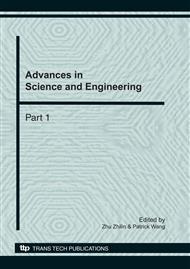p.174
p.183
p.189
p.195
p.201
p.206
p.212
p.221
p.228
A Particle Swarm Optimization Based on Dynamic Parameter Modification
Abstract:
A new particle swarm optimization based on dynamic parameter modification is proposed in this paper (Dynamic Parameter Modification Particle Swarm Optimizer, DPSO). In DPSO algorithm , is doing oscillating decay breaking through the constraint of topical linear decreasing, and the Euclidean distance and is calculated, which respectively stand for the Euclidean distances form the position of particle to the best position that the particle has passed and the best position that all the particles have passed under the time . Parameters and of topical PSO are modified dynamically based on the comparison of and in order to coordinate between global search and local search. Then find out the optimal value of Goldstein-Price function using topical PSO and the improved DPSO respectively, and the results demonstrate that compared to topical PSO, DPSO algorithm avoids falling into the local minimum and improves the search efficiency.
Info:
Periodical:
Pages:
201-205
Citation:
Online since:
November 2010
Authors:
Price:
Сopyright:
© 2011 Trans Tech Publications Ltd. All Rights Reserved
Share:
Citation:


